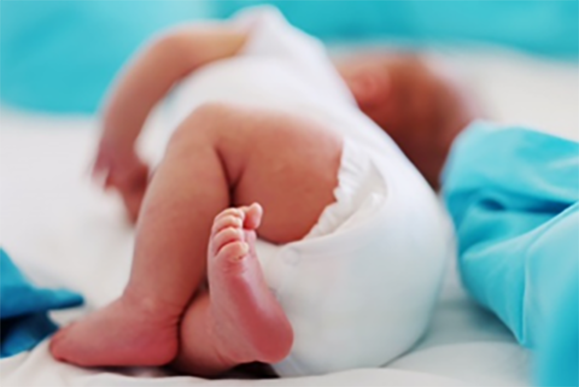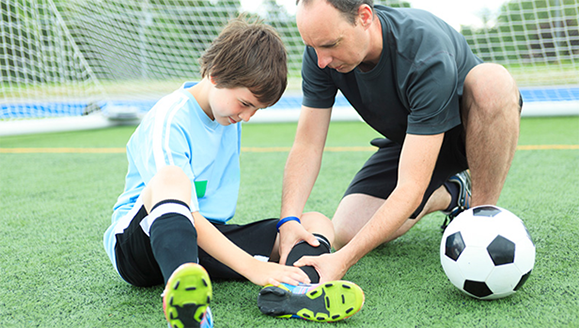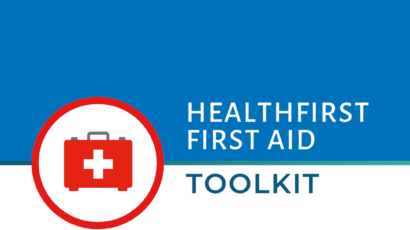by Senior HealthFirst Trainer, Nurse/Midwife, Polly Pupulin
From the moment our children are born we do everything we can to protect them. As they grow and develop, their needs and abilities are ever changing and keep us on our toes. When they start crawling, shuffling on their bottoms, moving on to walking followed by running, hopping, jumping, dancing, and generally exploring the world around them, they will inevitably get a bump or graze. But would you know what to do for these injuries, whether you are faced with a simple cut to the knee or a child who has been hurt more seriously?

How do we help a child involved in an accident?
According to the ‘European Report on Child Injury Prevention’ (WHO 2008), nearly 42,000 children and teenagers (0-19 years old) in the European region die annually from unintentional injuries. For 5-19 years old’s, death by injury is the leading cause of death. The top five causes are road traffic accidents, drowning, poisoning, burns and falls.
Toddlers and children need to have the space and freedom to move their bodies. It helps with growth, bone strengthening, coordination and many more functions. We cannot keep children wrapped in bubble wrap or prevent every incident. Accidents do happen and we must focus on prevention. But we should also be prepared with the knowledge to know when and how to help a child who has had an accident.

Attending a good quality First Aid or Cardio-Pulmonary Resuscitation (CPR) course will prepare you to look after yourself, others around you, and of course the injured child. You will learn basic and more complex skills ranging from helping the injured child to clean a wound, to knowing when you should seek further medical help or even call an ambulance.
Imagine a child chokes in front of you: you panic, everyone around you panics and no one knows what to do. You cannot wait for the ambulance to arrive; you need to step in and help that child as it may be too late by the time the ambulance gets there.
Attending a First Aid or CPR course will also equip you to manage the most stressful situations where a child’s life is at risk. In Switzerland we have excellent medical facilities, ambulances have fast arrival times, and we have skilled paramedics. But it is often the steps of the first person at the scene (the First Aider) who saves the person’s life.
What does CPR mean?
CPR stands for Cardio-Pulmonary Resuscitation. It is used when a person’s heart has stopped pumping blood around their body and when they have stopped breathing. During CPR, a rescuer breathes into a person’s mouth and lungs and pumps their heart for them using their hands whilst waiting for medical help to arrive. This is vitally important to maintain a supply of blood and oxygen to the person’s brain and vital organs and increase their chance of survival.

What will I learn on a child focused CPR and emergency first aid course?
When someone stops breathing it is the greatest medical emergency there is. We need to act safely and fast, you can help to save a baby’s or child’s life!
You could expect to learn:
- How to call for emergency help in Switzerland and what to say.
- How to give Cardio-Pulmonary Resuscitation (CPR) to babies and children.
- How to assess a baby or child’s level of consciousness.
- Putting an unconscious baby or child into a safe position (known as the ‘Recovery Position’)
- What to do in the case of drowning.
- How to help a choking baby or child.
What will I learn during a First Aid course?
First aid courses can differ in what they include to teach you. But you should expect to learn a mixture of topics such as how to help someone who has:
- Medical emergencies: a protocol to follow.
- What number to call in a medical emergency and what to say.
- Head injuries and suspected spinal injuries.
- Major blood loss and shock.
- Burns.
- Strains, sprains and broken bones.
- Cuts, grazes and nosebleeds
- Accidental poisoning
- Plus, what to have in your First Aid Kit and how to use it.

What should I put in a First Aid Kit?
What goes into a First Aid Kit will really depend on who and what you intend to use it for. If I was to provide my child’s carer with a first aid kit that was for him or her to carry, I would include the following as a minimum: disinfectant, plasters, gauze swabs, medical gloves, 2 bandages, a triangular bandage, an emergency blanket, a small pair of scissors and a face shield to provide CPR. But if you are going off to hike in the mountains for a week, you would need a more extensive First Aid Kit.
To view some ideas of First Aid Kits on sale please go to https://healthfirst.ch/shop/ .
Where can I find a course?
Look no further! Go to the HealthFirst website and don’t hesitate to contact us if you need further help. First Aid Saves Lives | Courses in English in Switzerland | HealthFirst





